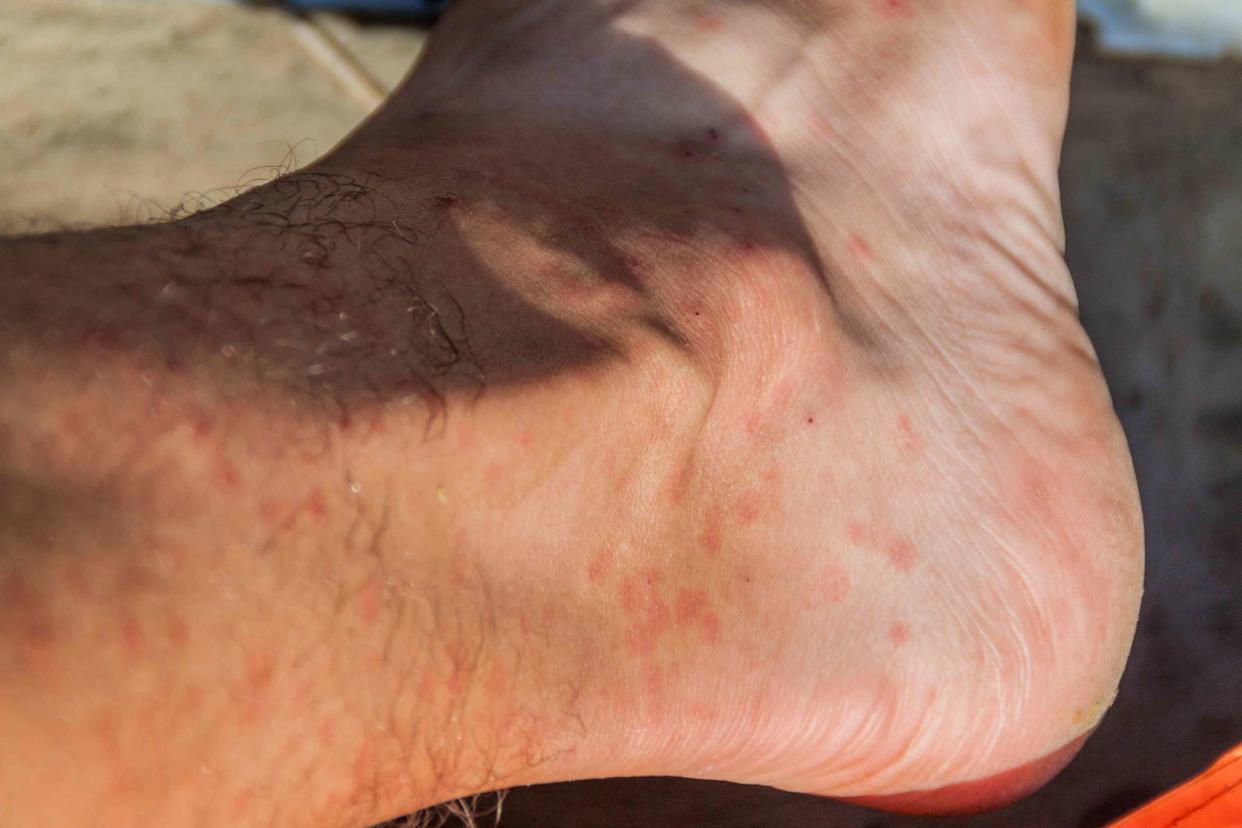Mosquito Bites vs. Sand Fly Bites: What to Know About Leishmaniasis Risk

mathess / Getty Images
Fact checked by Nick Blackmer
Key Takeaways
Leishmaniasis is a disease that’s transmitted by a bite from a female sand fly that has been infected by Leishmania parasites.
Leishmaniasis cases can be found all over the world, including parts of Asia, the Middle East, Africa, southern Europe, Mexico, and Central and South America.
Although leishmaniasis was not originally thought to be endemic to the U.S., a CDC study found 86 participants with leishmaniasis in the U.S. who had not traveled outside of the country.
While sand fly bites can grow larger than mosquito bites, they typically start off smaller and take longer to heal.
Summer might be over, but that doesn’t mean that the threat of pesky insects doesn’t linger. Aptly named sand flies—tiny tan insects that are about a quarter of the size of a mosquito—have become an insect of concern in the United States.
When infected by Leishmania parasites, sand flies have the ability to transmit various forms of leishmaniasis to humans.
“Leishmaniasis is a vector-borne disease caused by different species of Leishmania parasites transmitted through the bite of infected sand flies,” Vitaliano Cama, DVM, PhD, a microbiologist at the Centers for Disease Control and Prevention (CDC) told Verywell. There are several different forms of the disease; however, the three most common forms are cutaneous, visceral, and mucocutaneous.
Cutaneous leishmaniasis is the form that causes skin sores. Visceral affects internal organs, such as the spleen, liver, and bone marrow, and mucocutaneous destroys the body’s mucus membranes of the nose, mouth, and throat. Of the three, cutaneous is the most common form detected both in the U.S. and around the world, Cama said. The CDC estimates anywhere from 700,000 to 1.2 million people around the world experience cutaneous leishmaniasis each year.
Leishmaniasis is far from common in the U.S. In Texas—the only state that requires public health reporting of leishmaniasis—an average of six cases are documented each year. The reason to take notice of the disease and its tiny sand fly vectors now is that researchers are starting to notice more cases are originating in the U.S. than usual.
Where Is Leishmaniasis Found?
Leishmaniasis cases can be found worldwide, including some parts of Asia, the Middle East, Africa, southern Europe, Mexico, and Central and South America. Most of the positive leishmaniasis cases in the U.S. “are from people who traveled internationally, often to Latin America,” Cama added.
While leishmaniasis cases are not typically believed to be endemic to the U.S., a CDC study conducted by Cama and his colleagues, presented at the Annual Meeting of the American Society of Tropical Medicine and Hygiene, identified 86 cases of leishmaniasis in people who did not report travel outside of the U.S. between 2005 and 2019.
According to Luis Marcos, MD, associate professor of medicine in the Division of Infectious Diseases at Stony Brook University in New York, the total number of native U.S. cases is unknown. What experts know is that there’s a sand fly population that exists in southern parts of the country, including Texas. A recent 2021 study also found leishmaniasis cases in Southeast Oklahoma.
Marcos theorizes that the reason for this spread is global warming.
“We’re seeing more and more warmer winters. Not just in that area of the U.S. [the south], but also in New York,” he said. “Another example: We’ve seen very few cases of Lyme disease in the winter or early spring because it’s cold. But now when the temperatures are above 50 degrees, we see cases of Lyme or [other] tick-borne disease in the winter.”
Related: Climate Change Will Aggravate the Spread of More Than 200 Infectious Diseases
What Do Leishmaniasis Sand Fly Bites Look and Feel Like?
People bitten by an infected sand fly will experience skin lesions that can grow up to three inches. While painless, Cama said that lesions may appear red, raised, ulcerated, nodular, and or large.
Compared to mosquito bites, which are raised, red, and itchy bumps that go away after several days, sand fly bites usually start off small, grow into ulcers, aren’t typically painful, and take a longer time to heal.
Marcos said that the skin lesions should disappear without intervention within two to three months. If they don’t go away on their own, become painful, or leak fluid, Marcos said that treatment may be needed. If skin lesions are left untreated, they can turn into scars.
Treatment options for lesions vary from patient to patient, but a typical treatment might be a monthlong course of an oral, anti-parasitic medication. Other patients may need intravenous medication for a week.
How to Prevent Leishmaniasis
Currently, there are no vaccines or drugs to prevent infection. The best prevention is to take protective measures against sand flies.
Sand flies are generally most active at night, so the CDC recommends avoiding outdoor activities between sunset and sunrise. It’s also recommended to minimize the amount of exposed skin by wearing long-sleeved shirts, longer pants, and socks.
You should also consider wearing bug spray whenever you’re heading outdoors, camping, or hiking.
“Sand flies are repelled by bug sprays that contain DEET and can also be killed by permethrin,” Marcos said.
What This Means For You
While your odds of contracting leishmaniasis in the U.S. are still low, it’s still in your best interest to avoid a sand fly bite. Prevention is key: avoid buggy outdoor areas between dusk and dawn, wear long-sleeved shirts, pants, and socks, and apply bug spray with DEET to avoid getting bitten.
Read the original article on Verywell Health.

